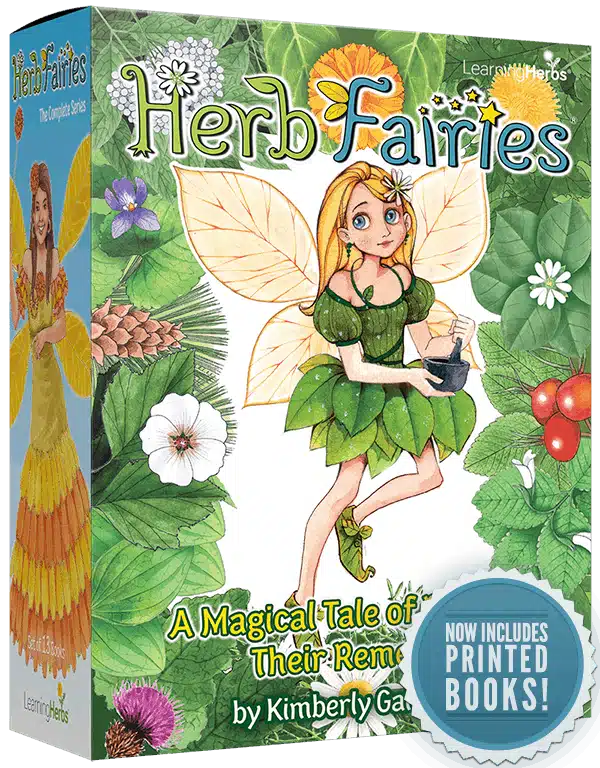While most of my garden is still dormant from the winter months, there’s one abundant beauty that is already unfurling its blooms… Chives! Chives are some of my favorite springtime herbs. This hardy perennial is one of the first plants to grow in the spring and harvests can begin weeks before some herbs have even woken up. Too often chives are dismissed as a garnish, something to sprinkle on your sour cream and baked potato. But chives have many health benefits! They check off so many boxes as a strong medicine, a delicious food (for example, chive blossom vinegar!), and an easy to grow and find herb.
Let’s take a deeper look…


What are Chives?
Chives are a perennial plant related to garlic and onions. Their botanical name is Allium schoenoprasum.
Chives are the only allium that is native to North America, Europe, and Asia. Humans have been enjoying chives for thousands of years.
While we typically eat the bulbs of garlic and onions, with chives we eat the leaves and flowers.
Chives as Food and Medicine
Similar to their garlic and onion cousins, chives are pungent and spicy. These flavor characteristics tell us that these are fantastic herbs for addressing stuck or stagnant digestion. They spice up digestion and warm things up, and their healing gifts shine in this chive blossom vinegar recipe below.
You don’t have to have poor digestion to benefit from chives. You can simply enjoy them as a way to maintain healthy digestion. Their spicy and pungent nature makes them a great addition when eating heavier foods (yes, like that sour cream and potato).
They have many of the same constituents as garlic and onion, like allicin, sulphur and phenolic compounds, flavonoids, saponins, and steroidal glycosides.1
Plus, chives may help keep your food safe! They’ve been shown to inhibit Escherichia coli in a food model.2
And chive leaves are exceptionally high in antioxidants!3 Even higher than garlic and onions. Adding just a bit of fresh chives to your meal is a fantastic way to modulate inflammation and promote health.
How to Grow (or Find) Chives
Chives are fun and easy to grow! As a perennial they return year after year. They are also easy to grow in a container.
Visit your local plant nursery to see if you can buy a plant start there. Or ask your gardening friends if they have some chives to spare. Chives readily spread and are easy to dig up and share. Existing plants can also be divided.
Plant your chives in rich soil that drains well. Chives aren’t a fussy plant. They do need to be watered occasionally (depending on where you live) but otherwise can be left to do their thing.
I have two chive plants growing. One is in a raised bed in my garden. The second is in a pot just outside my door. I love having both plants because I like using lots of chives! And I especially love having chives super close so I can spontaneously harvest some leaves to add to our meals.
You can harvest chive leaves using sharp scissors. Harvesting chives encourages new growth, so don’t be afraid to harvest!
Bees love the chive blossoms, which contain lots of nectar, so I like to leave flowers for them. However, once the flowers begin to fade it’s a good idea to cut them at the bottom of their stalk to keep the chives producing well.
How to Work with Chives
Chives are best when fresh. Growing your own is ideal: that way you have them readily available, and you can use them just after cutting.
You can also find chives at farmers markets and in the fresh herb section of grocery stores. When buying chives be sure to use them up quickly. They don’t last.
Here’s some of the ways I love to use chive leaves—
Abundantly sprinkled on practically any meal from our veggie and egg breakfast to a topping on our salmon or even pizza. You can have chives in sandwiches or add them to pesto. If it’s a savory meal, you can probably add chives to it!
Chives are also a favorite ingredient in my fresh herb salt recipe.
Chive flowers are beautiful and delicious! You can break up the flower and spread it on salads or use it as a pretty garnish for practically every meal. Bees love chive blossoms! So I always leave some for them to feast upon.
Luckily chives have lots of flowers so that I can even make a Chive Blossom Vinegar!
Chive Blossom Vinegar Recipe
This is a super simple recipe that captures the beauty and spice of chive flowers. You can use this Chive Blossom Vinegar in homemade salad dressing, sprinkled on cooked greens (like kale and collard), and in marinades.
What you’ll need…
- 2 cups fresh chive blossoms
- Approximately 2 cups apple cider vinegar (5% acidity)
- Gather your chive blossoms and gently remove any bugs to relocate them to a new home. If necessary you can wash the flowers.
- Add the flowers to a pint-sized glass jar.
- Then, pour apple cider vinegar over the flowers until the jar is filled. Cover with a glass or plastic lid. If you don’t have these then use parchment paper as a barrier between the vinegar and a metal lid (vinegar will corrode metal and ruin your vinegar). Label.
- Shake well. Keep this on your counter for 2 weeks, shaking daily. When you’re ready, strain off and reserve the vinegar. Compost the plants.
- This Chive Blossom Vinegar is best stored in the fridge for a longer shelf life but can also be kept on the counter. Shelf life is anywhere from 6 months to a year.
Yield: 1 1/2 cups
Now I’d love to hear from you!
Do you grow chives?
What are some of your favorites ways to enjoy spring chives?
Please share in the comments below.














I have made this before using white wine vinegar, so it turned a beautiful pinkish-purple color. I have a recipe for Green Goddess dressing that uses chives, as well as Cheesy Chicken with Chive Sauce; chives are also great in savoury muffins and biscuits!
Hi Amanda,
Thanks for sharing! Those recipes sound delicious :)
Thanks Rosalee. I planted chives in a container about 4 years ago. I live in Michigan and the first year they died back when the seasons changed. I forgot all about them and left the pot outside during our cold/snowy winter. Before winter was over, they were sprouting green again. I have since left them in that same container, in the same spot and each year they are the first green that we see. So easy and a money saver over the small handful you can buy at the grocery store. The flowers are getting ready to open and I am looking forward to making your vinegar recipe.
Hi Mary, I hope you enjoy Rosalee’s chive blossom vinegar recipe!
Hi
I live in a small apartment on my own, I used to be a very keen gardener.
I have a balcony, so you have inspired me me to grow some chives.
I am grateful
Andrea
Hi Andrea, I am glad that Rosalee’s article inspired you to grow chives!
You were speaking of the lids corroding vinegar. I have found saving peanut butter lids and mayo jar lids-they fit on the jars and you don’t have to worry about corrosion.
Hi Sherry,
Thanks for the great tip!
Can garlic chives (Allium tuberosum) be used in the same way? I have runaway plants in several locations, my children planted one tiny pot about 20 years ago and now it is in the oddest of places just like the mint and oregano.
Hey Desiree,
Great question! Garlic chives are a bit different in flavor, but they are worked with similarly. :)